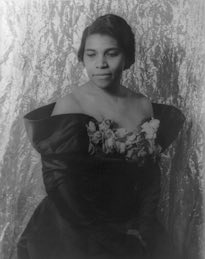The great conductor Toscanini told her, “Yours is a voice such as one hears once in a hundred years.” This brilliant contralto struggled out of a childhood of poverty in South Philadelphia, where she scrubbed steps and ran errands to earn a few pennies to help her mother. She sang joyfully in the church choir whose members raised the funds for her to attend music school. “We don’t take colored,” they told her coldly at the music school where she inquired. She built a career anyway, scraping up money for lessons, and riding the Black-only “Jim Crow” railroad cars to sing before Black audiences. She became the first Black singer to perform as a member of the Metropolitan Opera in New York City.
Like many Black artists in the days of segregation, she had to go to Europe to gain recognition. The show business promoter Sol Hurok heard her in Paris and decided to bring her back to this country, ignoring those who told him, “You won’t be able to give her away.” Her famous concert at the Lincoln Memorial on Easter Sunday, 1939, demonstrated that her great talent could shatter the color line.
The first Black person to perform at the White House, Marian Anderson’s career helped to make music one of the first fields in which Black Americans’ achievements were given fair and full recognition. Her many honors and recognition include the Presidential Medal of Freedom and a Grammy Award for Lifetime Achievement.

